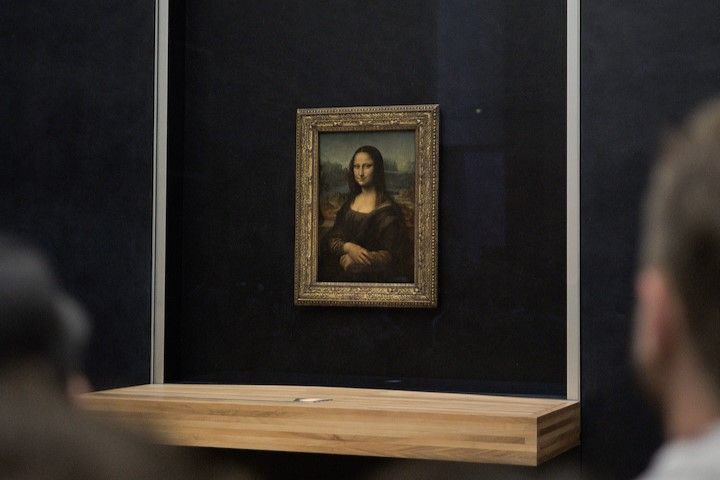Paintings Department: must-see pictures

The Louvre Museum’s Paintings Department is special in that, apart from very few pieces, it only exhibits works from before 1848. This collection covers European painting movements from the 13th to the 19th century.
The history of the Louvre’s paintings department
François I began to collect works of art to form a royal collection. It is thanks to him that the Kingdom of France acquired the legendary and mysterious portrait of the Mona Lisa. The Louvre Museum opened towards the end of the French Revolution in 1793. The paintings transferred there are mainly exhibited in the Grand Gallery or the Quadrangle. The specialization of the Louvre Museum’s collection for paintings prior to 1848 dates from the 20th century. In 1986, the decision was made for the more modern paintings to be put on display at the nearby Musée d’Orsay.
See the Louvre Museum’s collection of paintings
To admire the most beautiful paintings in the world exhibited at the Louvre, head to the first floor of the Denon wing and the second floor of the Richelieu and Sully wings. The Grand Gallery is one of the best known rooms and should not be missed. Almost 1,500 feet long and 42 feet wide, this majestic room of the palace is one of the entrances to room 6, where the Mona Lisa is displayed. It isn’t difficult to imagine the building’s royal past as you walk through it!
A selection of must-see pieces
The Mona Lisa is unsurprisingly one of the most popular paintings. But take a detour and visit 5 other noteworthy masterpieces!
The Raft of the Medusa
Painted between 1818 and 1819, the Raft of the Medusa is a must when you visit the Louvre. This is a huge painting measuring 193.3 inches tall and 282.3 inches wide. The work of the Romantic painter Théodore Géricault, it is known for its pictorial composition, which gives an emotional account of the real event of the raft of the Medusa.
Liberty Leading the People
The painting of Liberty Leading the People was transferred to the Louvre in 1874. It is one of the most famous works by Eugène Delacroix and is an allegory often chosen to represent the French Republic. Its monumental size, 102.4 inches x 128.0 inches, convey to the spectator the importance of the events described.
The Musée National Eugène Delacroix in Saint-Germain des Prés in Paris is accessible with a Louvre Museum entrance ticket.
The Cheat with the Ace of Diamonds
The cheating theme was made popular by Caravaggio’s painting in the 16th century. At the time, the depiction of ordinary people was something of a novelty. This subject shows characters facing three quarters towards the outside of the painting, as if to reveal the cheating to the onlooker. The Cheat with the Ace of Diamonds by Georges de la Tour met these criteria.
Alexander the Great in Babylon
When Alexander the Great entered Babylon, Darius III of Persia fled his people and his palaces. Alexander the Great was triumphant and discovered a sumptuous city, far from what the Greeks had imagined. Behind the figure of Alexander, standing gloriously in his golden chariot, the hanging gardens, one of the 7 Wonders of the Ancient World, can be made out. Painted by Charles Le Brun in the time of Louis XIV, this painting is also known as the Triumph of Alexander.
The Louvre’s Paintings Department is the most popular with visitors, along with Egyptian Antiquities. Everyone wants to see the Mona Lisa at least once, even if it is from a distance. Beyoncé even made the trip, an episode that led to a selfie that went global.


